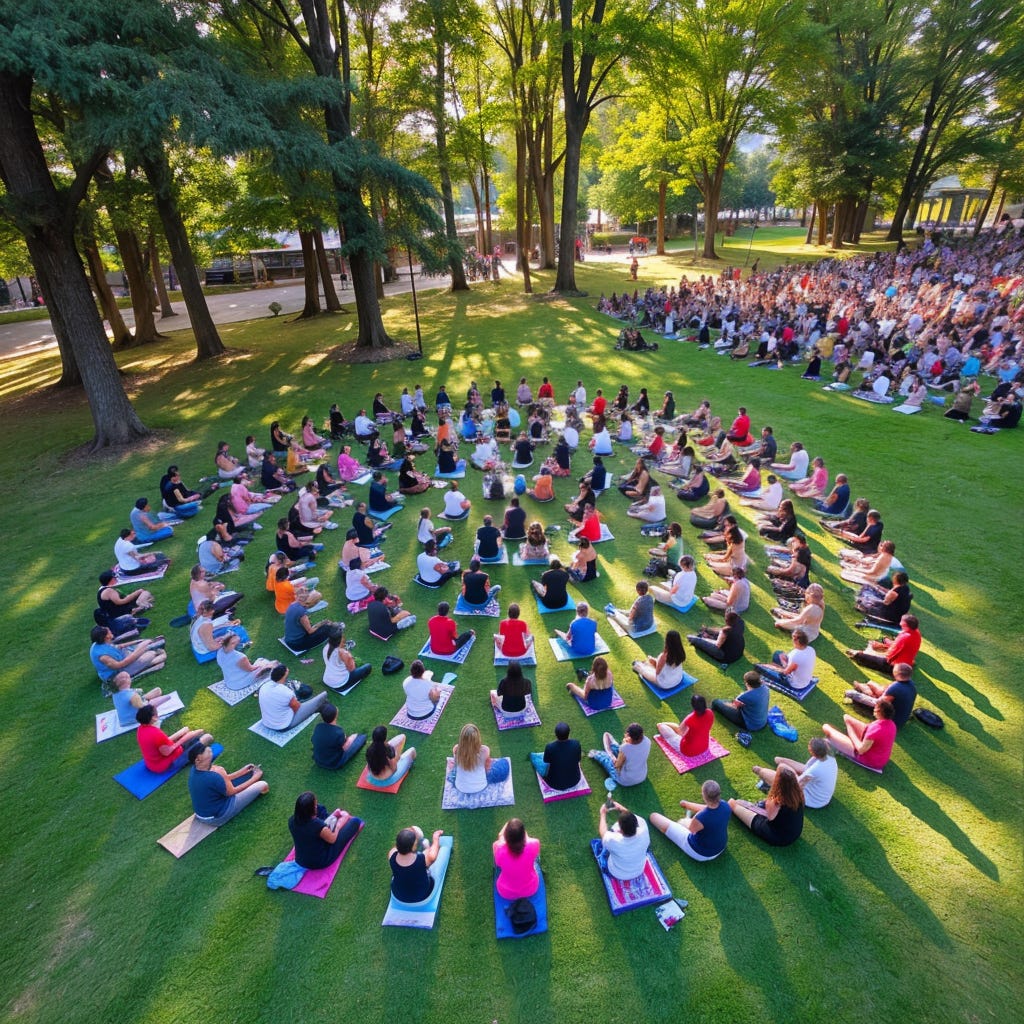Meditation: The Past, Present, and Future of a Peaceful Revolution
Meditation Through the Ages
Meditation is like an old friend that has been there for us, quietly evolving over time. What started as a spiritual practice thousands of years ago has transformed into a modern wellness essential. The future of meditation? It looks quite promising. From ancient temples to innovative technology, meditation has consistently served as a source of well-being throughout history.
The Past: Ancient Wisdom for Modern Lives
Imagine a time when people sat in silence to connect with something bigger than themselves. That’s how meditation began.
In those days, it wasn’t just about achieving enlightenment or inner peace. Meditation was also about keeping the mind and body healthy—a kind of early self-care.
Healing Back Then: Practices like mindfulness and transcendental meditation helped people stay calm, centered, and in tune with their environment.
Timeless Lessons: These traditions weren’t quick fixes; they were about balance and self-awareness, teaching people how to handle life’s ups and downs.
Meditation wasn’t a side activity—it was a way of life, with the mind and body viewed as two sides of the same coin.
The Present: When Science Joins the Party
Fast forward to today, and meditation is more popular than ever, found everywhere from yoga studios to your smartphone. Here’s the exciting part: science is confirming what ancient sages always knew— it works.
Mental Health “Magic”: Therapies like Mindfulness-Based Stress Reduction (MBSR) are now used to treat anxiety, depression, and post-traumatic stress disorder (PTSD).
Physical Health Advantages: Meditation isn’t just for your mind; it also lowers blood pressure, improves sleep, and even boosts immunity.
Digital Mindfulness: With apps like Calm and Headspace, meditation has gone digital. Wearables now measure stress levels while you breathe your way to calm.
The best part? You don’t need hours of free time or a peaceful mountain to meditate. Just a few minutes a day with your phone can make a significant difference.
The Future: Meditation Goes High-Tech
So, what’s next for meditation? A lot! The future merges ancient wisdom with today's innovations, shaping something extraordinary.
Personalized Just for You: AI-powered apps will create meditation sessions that adapt to your mood, stress level, and even your biological rhythms.
Brain-Boosting Tech: Imagine using neurofeedback or brain-machine interfaces to dive deeper into mindfulness and relaxation.
Global Impact: Meditation won’t just be for individuals; it’ll become a global wellness tool, offering accessible, low-cost mental health solutions for everyone.
Picture a world where meditation is integrated into our daily lives—through healthcare, education, or technology. It’s not just a wellness trend.
What Happens When You Meditate?
Meditation is often misunderstood as sitting still and doing nothing, but it’s so much more than that. It’s an intentional act of focusing your mind, often on your breath, a mantra, or simply the present moment.
Here’s a quick breakdown of what the act of meditation might look like:
Find Your Space: Sit in a comfortable spot—on a chair, a cushion, or even the floor. The idea is to feel supported, not stiff.
Close Your Eyes: Shutting out visual distractions helps the mind quiet down.
Breathe: Focus on the natural rhythm of your breath. Inhale deeply, exhale slowly. Feel the rise and fall of your chest.
Notice Your Thoughts: Your mind will wander—it’s natural. Gently bring your attention back to your breath, a word, or whatever you’ve chosen to focus on.
Be Present: Meditation isn’t about emptying your mind; it’s about observing your thoughts without judgment and gently letting them go.
Timeless and Transformative
Meditation has always been about connecting—whether to yourself, to others, or to something greater. It started in ancient silence, found its voice in modern science, and is now poised to succeed in a tech-driven world.
References
Puhlmann, L. M. C., Vrtička, P., Linz, R., & Valk, S. L. (2024). Serum Brain-Derived Neurotrophic Factor increase after 9-month contemplative mental training is associated with decreased cortisol secretion and increased emotional resilience. Psychiatry Global Open Health. DOI: 10.1016/j.psygo.2024.127.
Müller, L., Rapoport, O., & Rahe, M. (2024). Mindfulness meditation improves mental health in flood survivors and disaster volunteers: A randomized wait-list controlled trial. Mindfulness. DOI: 10.1007/s12671-024-02467-7.
Naude, C., Skvarc, D., Biurra, Y. C., Blake, L., & Evans, S. (2024). Online mindfulness-based intervention for adults with inflammatory bowel disease and psychological distress: A feasibility randomized controlled trial. Journal of Clinical Psychology. DOI: 10.1016/j.jpsy.2024.396.
Cordero Jr., D. A. (2024). Spiritual rejuvenation: An alternative way to healthy aging. Psychiatry Journal. DOI: 10.1002/psyc.2024.896.
Ehsan, F., Iqbal, S., Younis, M. A., & Khalid, M. (2024). An educational intervention to enhance self-care practices among 1st-year dental students—a mixed-method study design. BMC Medical Education. DOI: 10.1186/s12909-024-06198-0.
Pradhan, M., Singh, P., & Singh, A. K. (2024). The impact of Transcendental Meditation on happiness and self-efficacy among university students. Health Informatics Journal. DOI: 10.1177/1460458224.
Pappagianopoulos, J., Brunt, S., & Mazurek, M. O. (2024). Alexithymia, inner thinking patterns, and perceptions of mental health therapy strategies among autistic adults. Journal of Autism and Developmental Disorders. DOI: 10.1007/s10803-024-06643-5.
Liu, Y., Bi, K., Hodges, S., & Kong, J. (2024). Brain, behavior, and immunity integrative clinical evidence & advances in Traditional Chinese Medicine for depression. Brain Behavior and Immunity Integrative. DOI: 10.1016/j.bbii.2024.0503.
Giridharan, S. (2024). Residential meditation retreats: A promise of sustainable well-being? Cureus Journal of Medical Science. DOI: 10.7759/cureus.314095.








